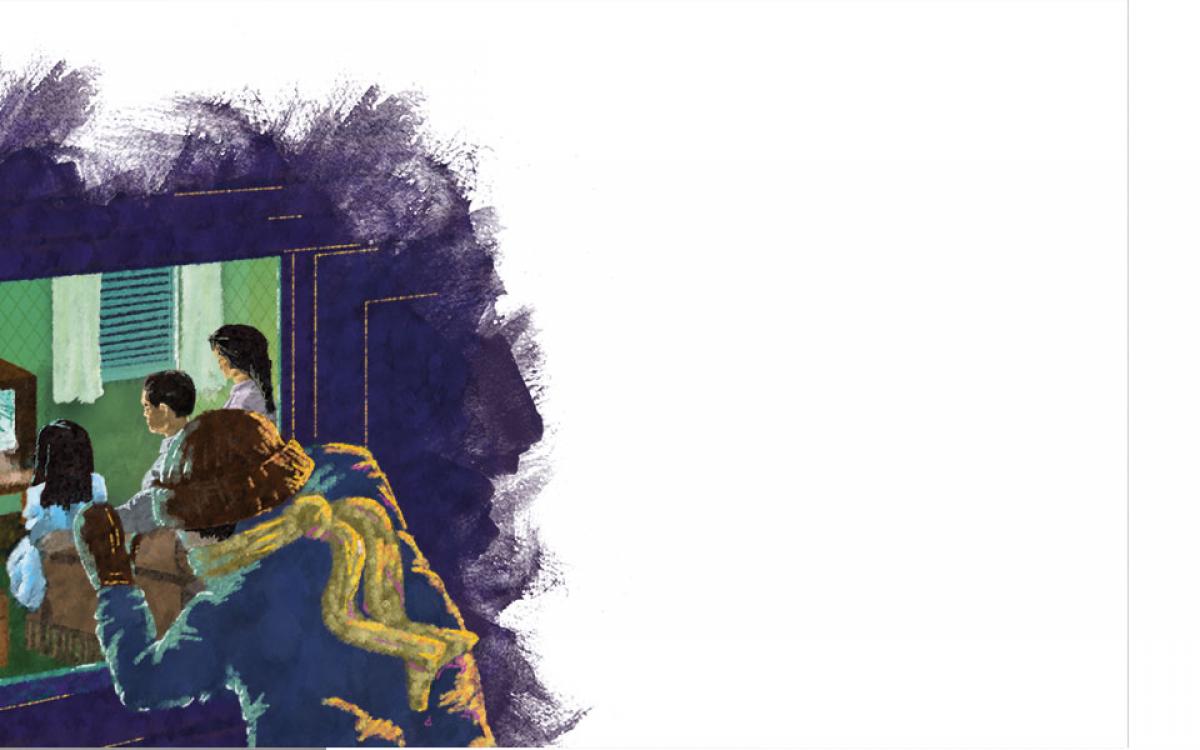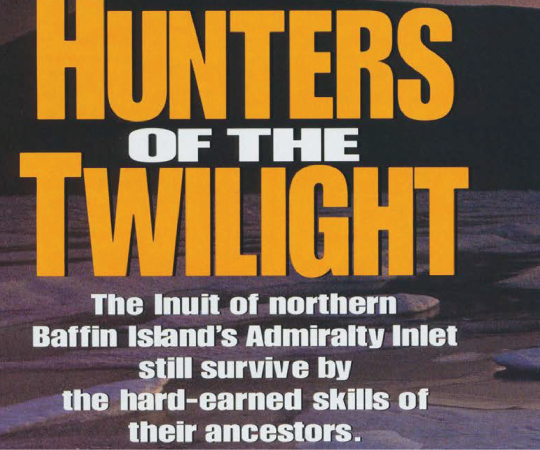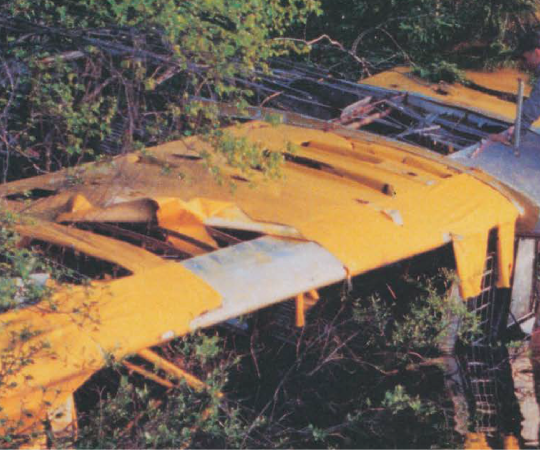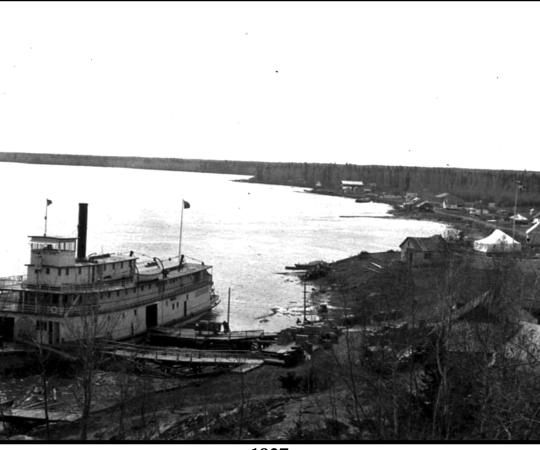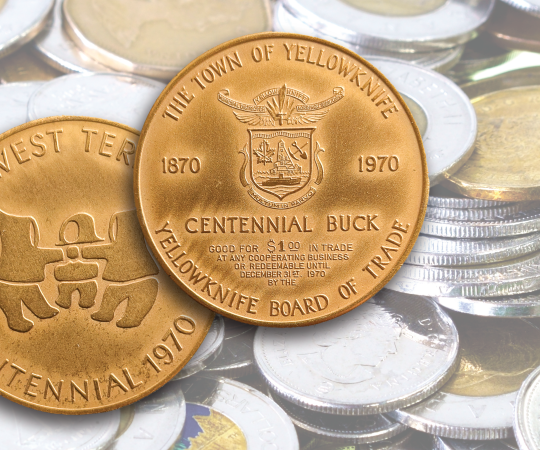You did not talk about the hockey game when you went shopping at the Hudson’s Bay Co. in Fort Resolution. When television programming first came to the NWT community on the south shore of Great Slave Lake in the late ‘60s, it arrived by plane—on tapes from Edmonton that cycled from community to community. “It was canned TV,” says Linda Balsillie, who lived there at the time. “They had TV every night, but it was a week late and it was like you would get Sesame Street at 9 in the evening.”
The Bay manager would avoid newspapers—only reading them a week late. He’d carefully manage his daily interactions and what he heard over the radio to remain ignorant of the outcome of the previous Saturday night’s hockey game. And if you bumped into him and blew it? “He would really get mad at you,” says Balsillie. “Back then the Bay was the big store there, so you certainly didn’t want him mad at you.”
Television’s arrival altered the ebb and flow of daily life in Northern communities in a major way. And the stress it might have caused some shoppers at the Bay was nothing compared to the stress that the introduction of the medium put on the North’s indigenous cultures.
“It’s like some kind of invasion from outer space or something,” Cindy Gilday, a language and Dene rights advocate told author Jerry Mander in 1984, relayed in his examination of television’s detrimental impact on culture, In the Absence of the Sacred. Gilday continued: “First it was the government, then those oil companies, and now it’s TV.”
The moving pictures came into most Northern homes in the 1970s, showing strange and foreign southern customs, attitudes and behaviours—provided with zero context. Debbie Brisebois, in a report Whiteout Warning, relates an Inuk woman’s impressions after watching the oafish Archie Bunker in All in the Family. “There was the father, obviously a stupid man, screaming at his children and his wife. He seemed to hate them. They were lying to him … they were screaming back at him … and then in the last five minutes everyone kissed and made up. We were always taught to treat our elders with respect. I was embarrassed for those people on TV. I thought, I always knew white people were weird. I wondered if that was really what people were like in the south.”
People on the screen drank and plotted and schemed. “The effect has been to glamourize behaviors and values that are poisonous to life up here,” Gilday tells Mander. “Our traditions have a lot to do with survival. Cooperation, sharing, and nonmaterialism are the only ways that people can live here. TV always seems to present values opposite to those.” Leaders rightfully recognized the devastating effects that the television—left on constantly, broadcasting flashy southern content in every living room—could have on local languages and cultures.
That’s because TV had become more than just a curiosity—there were stories about a woman who would pray for the characters of a soap opera every night, because she believed they were real. When the television was being pushed on Fort Good Hope, NWT by the CBC, local leaders heard horror stories of what would happen in its aftermath—woodpiles getting low, women no longer sewing, families hardly visiting each other. Particularly enthralled by the new medium were children—they were staying up late and then, exhausted, falling asleep at school. They soaked up the informal English from the two-dimensional actions played out on the tube and teachers noticed a marked drop-off in local languages spoken by kids who’d grown up in front of the TV.
Marie Wilson was living in Fort Good Hope when television came in there and she remembers the night-and-day change—“in the way that the community came together, in attendance at meetings, in the ability to get a team together for scrub baseball, everything.” There was even an appeal to the CBC to change the time of radio programming because people were so hooked on television soap operas.
Across the North, political organizations noticed how the television had entrenched itself in the lives of Northerners and pushed for local representation and indigenous-language programming on TV.
Wilson had been both a regional and national journalist with the CBC prior to moving to Fort Good Hope to start a family. The question became, “Okay, it’s here, can we at least have something relevant on it? Can we at least have some imagery of ourselves, as the northern part of the country, and some voices and stories that are about issues here?” Wilson, who would later become CBC North’s regional director, worked to do just that, but with little backing from the corporation’s southern decision-makers. She started with Focus North, the first weekly TV program made in the North for Northerners. “In the early days of television, we used to run a show in English and then there would be an announcement come on in Dene that would say, ‘If you want to watch a show in Dene, turn your television volume down and your radio volume up,’” she says. “And then we would have a Dene track on the radio while people were watching TV.”
In the early 1980s, the Inuit Tapirisat of Canada began its experimental Inukshuk Program, which led to the creation of Inuit programming in Inuktitut and eventually became the Inuit Broadcasting Corporation. Over the years, organizations big and small—from APTN to IsumaTV—joined the fold, encouraging Northerners to tell their own stories, to relearn their indigenous languages and fading customs, to use a medium that once accelerated the loss of traditions to regain and strengthen them.

